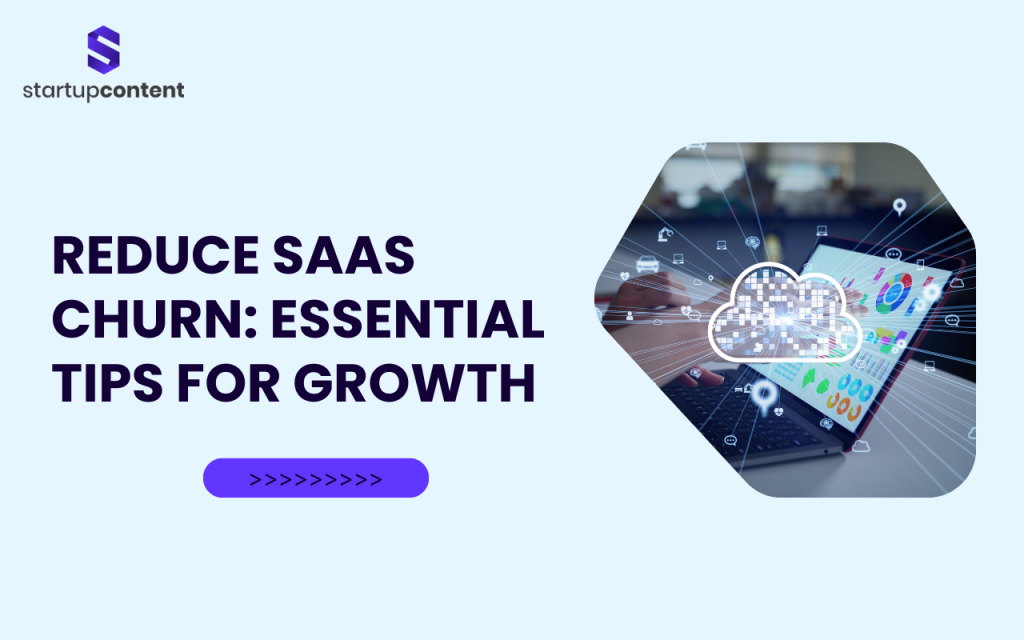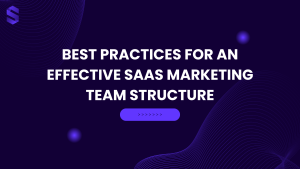Are you struggling with saas churn? You’re not alone. Many businesses face the challenge of keeping customers engaged and preventing subscription cancellations. In the fast-paced world of software as a service, customer retention is key to success. Let’s dive into some eye-opening statistics and practical tips to help you tackle this common issue.
Did you know that improving customer retention by just 5% can boost your profitability by up to 95%? That’s right – keeping your existing customers happy is far more cost-effective than constantly chasing new ones. In fact, it’s about five times more expensive to acquire a new customer than to retain an existing one.
The average revenue churn rate for SaaS companies hovers around 5%, with top performers achieving 3% or less. For small and medium-sized businesses, monthly churn rates can climb as high as 5%. These numbers highlight the importance of implementing effective strategies to reduce saas churn and boost your bottom line.
Key Takeaways
- Improving customer retention by 5% can increase profits by up to 95%
- Acquiring new customers costs 5 times more than retaining existing ones
- Average SaaS revenue churn rate is 5%, with top performers at 3% or less
- Monthly churn rates for small/medium SaaS businesses can reach 5%
- Personalized onboarding and proactive customer service reduce churn
- Utilizing in-app messaging and NPS feedback can improve retention
Understanding the Impact of Customer Churn on SaaS Growth
Customer churn is a big problem for SaaS companies. It hurts their growth and profits. Even a small improvement in keeping customers can make a big difference.
For example, keeping just 5% more customers can increase profits by 25% to 95%.
Revenue Loss and Financial Impact
High churn rates hurt a SaaS company’s money. The revenue churn rate shows how much money is lost when customers cancel or downgrade. Most companies want to keep this rate low, around 1-2% per month.
Customer Lifetime Value Reduction
Churn also lowers the value of customers over time. A good churn rate for MRR is about 5% per year or 0.42% per month. If this rate is higher, it can hurt long-term growth.
Resource Allocation Challenges
High churn rates make it hard to spend money wisely. It’s tough to decide between keeping current customers and getting new ones. Finding ways to prevent churn is key for growth.
| Churn Type | Description | Impact |
|---|---|---|
| Voluntary Churn | Customers consciously decide to leave | Indicates product dissatisfaction or competition |
| Involuntary Churn | Customers unintentionally leave due to billing issues | Highlights need for improved account management |
| Revenue Churn | Percentage of recurring revenue lost | Directly affects financial performance |
Knowing about churn helps SaaS companies make better plans to keep customers. This improves how happy customers are.
Defining SaaS Churn and Its Types
SaaS churn is a key metric for tracking customer loss over time. It shows how many customers stop using your service or cancel their subscriptions. Knowing about churn is crucial for SaaS companies that count on ongoing income.
There are two main types of churn: voluntary and involuntary. Voluntary churn happens when customers choose to leave. This might be because they’re not happy, can’t afford it, or found something better. Involuntary churn is when customers stop using the service by accident. This often happens because of payment problems or technical issues.
Let’s look at some real-world churn data from SaaS.io:
| Churn Type | Metric | Value |
|---|---|---|
| Customer Churn Rate | October | 3.7% |
| Revenue Churn Rate | October | 0.14 |
| Gross Churn Rate | Annual | 14% |
| Net Churn Rate | November | 1.1% |
These numbers show how different churn metrics can change. Customer churn looks at how many users leave. Revenue churn shows the financial loss. Gross churn counts all losses, while net churn considers new customers and upgrades.
“Understanding and reducing churn rates are critical for SaaS businesses relying on recurring revenue and customer engagement.”
By studying these types of churn, you can make plans to keep more customers. This helps your SaaS business grow.
Key Metrics to Track Customer Attrition
It’s key to know about customer attrition for SaaS growth. By watching certain metrics, you can learn a lot about keeping customers. Let’s look at important customer retention metrics and how to figure out churn rates. This will help you see how to do better in your business.
Monthly Churn Rate Calculation
The monthly churn rate shows how many customers you lose in a month. To find it, divide the number of customers lost by the total at the start. For example, if you start with 500 customers and lose 15, your rate is 3%. Most SaaS companies want a rate between 3-8%.
Annual Churn Rate Assessment
The annual churn rate gives a bigger picture of customer loss. It’s found by dividing the number of customers lost in a year by the total at the start. For instance, if you start with 1,000 customers and lose 300 in a year, your rate is 30%. The average rate for SaaS companies is between 32-50%.
Revenue Churn Analysis
Revenue churn shows the money lost because of customer loss. It’s found by dividing lost revenue by total revenue at the start. This metric shows the money lost because of losing customers. For example, losing 5% of $100 subscriptions means a $5,000 monthly loss.
| Metric | Formula | Target Range |
|---|---|---|
| Monthly Churn Rate | (Customers Lost / Total Customers) x 100 | 3-8% |
| Annual Churn Rate | (Customers Lost in Year / Total Customers at Start) x 100 | 32-50% |
| Revenue Churn Rate | (Lost Revenue / Total Revenue at Start) x 100 | Varies by industry |
By always checking these key metrics, you can find trends and problems early. You can make smart choices to keep more customers and lower churn in your SaaS business.
Early Warning Signs of Customer Churn
Spotting churn risk early can save a lot of money. It’s cheaper to keep customers than to get new ones. By catching signs early, you can keep customers happy and using your product more.
Important signs of churn include:
- Declining product usage
- Slow onboarding progress
- Increased support requests
- Negative feedback
- Hesitation in contract renewals
Watching for these signs helps you act fast. Keep an eye on how customers use your product and how they feel about it. A small increase in keeping customers can make a big difference in profits.
| Churn Risk Factor | Impact on Business | Mitigation Strategy |
|---|---|---|
| Declining usage | Revenue loss | Personalized re-engagement campaigns |
| Slow onboarding | Poor product adoption | Streamlined onboarding process |
| Increased support requests | Resource drain | Proactive customer education |
| Negative feedback | Brand reputation damage | Swift issue resolution |
| Renewal hesitation | Customer loss | Value reinforcement strategy |
By tackling these signs early, you can lower churn and build strong customer ties. Keeping customers is key to growing your SaaS business.
Is your churn rate holding back growth? Take action before it’s too late! Our expert-led content strategies help SaaS businesses improve retention and boost lifetime value. Book a free strategy session today and start reducing churn!
Creating an Effective Onboarding Strategy
A good onboarding plan is key to keeping customers and getting them to use your product. With 74% of companies having customer success teams, it’s clear they know how important it is. Let’s look at what makes a good plan.
Personalized Welcome Experiences
Customizing the welcome for each customer group helps a lot. A personalized message or video can make a big difference. It shows you care and want them to use your product.
This makes 85% of customers more likely to stay with you. They feel valued and appreciated.
Interactive Product Walkthroughs
Product tours and tooltips help users learn about your features. This is what 67% of customers like. It makes learning fun and easy.
Tools like UserGuiding help make onboarding better. It’s more fun and gets the job done.
Success Milestone Mapping
Setting up milestones during onboarding is very important. It makes users feel good as they achieve things. This can really help keep them around.
Without good onboarding, 75% of new users might leave. It’s a big risk.
| Onboarding Element | Impact on User Activation | Customer Preference |
|---|---|---|
| Personalized Welcome | 85% increased loyalty | High engagement |
| Interactive Walkthroughs | Improved feature adoption | 67% prefer self-service |
| Success Milestones | Reduced early-stage churn | Increased motivation |
Using these strategies can make your onboarding better. It helps keep customers and makes them more likely to use your product for a long time.
Implementing Customer Success Programs
Customer success programs are key for SaaS growth. They help clients reach their goals with your product. This focus on support and keeping clients can really help your profits.
Did you know 90% of SaaS revenue comes from customer success? But, only 23% of B2B companies focus on the customer. This means a big chance for growth.
Good customer success programs include regular meetings, personal help, and celebrating wins. These steps can lead to great results. For example, Zoom says existing customers spend 30% more each year.
| Component | Description | Impact |
|---|---|---|
| Proactive Engagement | Regular check-ins and support | Increases customer satisfaction |
| Personalized Guidance | Tailored advice for optimal product use | Improves product adoption |
| Customer Health Scores | Metrics to gauge client success | Helps predict and prevent churn |
| Success Celebration | Recognizing customer achievements | Boosts customer loyalty |
Investing in customer success is smart. SaaS companies spend about 6% of their revenue on it. This can lead to more people using your product, more referrals, and stronger support from customers.
“Customer success is not just a department, it’s a company-wide philosophy that drives growth and retention.”
By having strong customer success programs, you’re not just keeping customers. You’re also preparing for long-term growth in the SaaS world.
Optimizing Product Experience and Usage
It’s key to make your product better to keep customers from leaving. Focus on making it easy to use and adding new features. This keeps users happy and coming back.
Feature Adoption Tracking
Watching how users use your features is important. It shows where you might need to help more. This helps you make your product better and keep customers.
A study showed that using more features means less customers leave. This is good for your business.
User Interface Improvements
A good interface is important for keeping customers. Always listen to what users say and use data to improve. A quick start to using your product means more customers stay.
Performance Monitoring
Checking how your product works helps fix problems fast. Look at things like how long it takes to load pages. This makes sure everything runs smoothly.
| Optimization Strategy | Impact on Churn | Implementation Tip |
|---|---|---|
| Feature Adoption Tracking | Reduced churn by 15% | Use in-app analytics tools |
| UI Improvements | Increased retention by 20% | Conduct regular usability tests |
| Performance Monitoring | Lowered churn by 10% | Set up automated alerts for issues |
Using these tips can really help your product. It makes users happier and keeps them coming back. Focus on making your product better for a healthier business.
Developing a Proactive Support System
A proactive support system is key to keeping customers in SaaS businesses. It helps solve problems before they get big. This makes customers happier and more likely to stay.
Self-service resources help customers solve problems on their own. Make a big knowledge base and in-app help center. This cuts down on support tickets and makes customers happier.
Use support automation to help customers quickly. Set up chatbots or automated triggers. They guide customers through tough spots, helping when they need it most.
| Proactive Support Strategy | Impact on Customer Retention |
|---|---|
| Self-service resources | 83% of customers prefer self-diagnosis |
| Proactive customer contact | 70% view brands favorably |
| Data-driven issue resolution | Reduces frustration and abandonment |
Look at support tickets often to find common problems. Use this info to make your product better or your help center clearer. This shows you care about making things better for your customers.
Offer support in many ways like email, live chat, phone, and social media. Try to answer fast on all platforms. This shows you value their time and care about their problems.
“Proactive customer support is not just about solving problems; it’s about creating experiences that build trust and loyalty.”
Building a strong proactive support system can really cut down on customer loss. It helps you keep customers for a long time. The goal is to meet customer needs before they become problems. This helps your SaaS business grow and succeed.
Building a Strong Customer Feedback Loop
Creating a strong customer feedback loop is key for SaaS growth. The global SaaS market is expected to hit $900 billion by 2030. It’s more important than ever to listen and act on what customers say. Let’s look at ways to build a good feedback system.
Survey Implementation Strategy
Regular surveys help check if customers are happy. Use Net Promoter Score (NPS) surveys to see how loyal they are. Remember, 91% of customers think their reviews should guide innovation. Mix in other surveys to get different views and insights.
Feedback Analysis Methods
Use tagging systems to find common themes in feedback. This helps focus on what needs to improve and spot trends. Look at data from:
- Customer support feedback
- Social media listening
- Bug reports
- Review sites
- Focus groups
Chatbots can handle simple questions. This lets your team work on deeper feedback and analysis.
Action Plan Development
Make plans based on what you learn from feedback. Focus on big issues first. Remember, 59% of customers leave after a bad experience. Tell customers how their feedback helps improve the product. This can really boost how happy and loyal they are.
“Your feedback shapes our product. We’re committed to continuous improvement based on your insights.”
By using these strategies, you’ll make a strong feedback loop. This will help your SaaS business grow and keep customers loyal.
Understanding Customer Health Scoring
Customer health scoring is key for SaaS companies to stop churn. It tracks things like how often customers use features and log in. It also looks at support tickets. This helps figure out who might leave and when.
To make a good customer health score, give points to actions. For example:
- Positive action 1: weight = 5
- Positive action 2: weight = 10
- Negative action 1: weight = 3
- Negative action 2: weight = 7
The score formula is simple: add up all the points. But, change the points for different customers. This is because different groups act differently.
SaaS companies use different ways to show health scores:
- Color-coded scale: Green (healthy), Yellow (needs attention), Red (at-risk)
- Letter grade scale: A (excellent) to F (high churn risk)
- Percentage scale: Uses many metrics for a single score
When setting up a health scoring system, think about how customers use your product. Also, look at support interactions and how engaged they are. This helps you know who needs help and when. It guides your efforts to keep customers.
Pricing Strategies to Reduce Saas Churn
Smart SaaS pricing is key to keeping customers. It makes sure your prices match what customers think they get. This helps keep more customers around.
Value-Based Pricing Models
Value-based pricing links your prices to what customers get. It makes sure they feel they got a good deal. This way, fewer customers leave.
In fact, 82% of SaaS companies show their prices online. This helps attract more users and keeps them from leaving.
Flexible Payment Options
Flexible payment plans help keep customers happy. You can offer monthly, quarterly, or yearly payments. This meets different customer needs.
You could also have pricing based on how much customers use your service. This is good for those with changing needs.
Subscription Plan Optimization
Keep your plans up to date with what customers want. This keeps you competitive and meets their changing needs.
| Pricing Strategy | Description | Example |
|---|---|---|
| Penetration Pricing | Initial low price to capture market share | Disney Plus ($6.99 launch price) |
| Competitor-Based Pricing | Pricing based on competitor analysis | Hulu (slight price difference from Netflix) |
| Cost-Plus Pricing | Costs + markup percentage | Common in manufacturing and retail |
A good pricing plan can really help your business. By using these strategies, you can make customers happier. This leads to more customers and more growth for your company.
Leveraging Data Analytics for Churn Prevention
Data analytics is key for SaaS companies to keep customers. It uses predictive analytics and churn modeling. This helps find customers at risk and keep them through smart plans.
Churn modeling finds out why customers leave. It looks at things like bad onboarding and poor service. SaaS companies can then fix these issues to keep customers happy.
To use data analytics well for keeping customers, try these:
- Watch how users act in different places
- Look at how they use the product to find at-risk ones
- Use quick surveys and feedback in the app
- Check Net Promoter Scores (NPS) for loyalty clues
- Try A/B testing to make experiences better
By using these methods, SaaS companies can aim for a 5-7% monthly churn rate. This shows they’re doing well in keeping customers happy and using the product.
| Churn Prevention Strategy | Impact on Retention |
|---|---|
| Predictive Analytics | Early identification of at-risk customers |
| Churn Modeling | Pinpoint key factors contributing to attrition |
| Data-Driven Retention | Targeted interventions to improve satisfaction |
Remember, using data analytics to prevent churn is a constant job. Keep improving your plans with new data to stay ahead and keep customers for a long time.
Creating Customer Engagement Programs
Customer engagement is key for SaaS growth. It’s not just about making users happy. It’s about creating real connections that keep them interested in your product. This way, you can lower churn rates and increase how long customers stay with you.
Educational Content Development
Make a strong content marketing plan to teach and help your users. Offer webinars, tutorials, and guides that show your product’s worth. This not only helps users use your software better. It also makes your brand stand out as a leader in your field.
Community Building Initiatives
Create a lively user community where people can meet, share, and help each other. This makes users feel part of something and helps them become your product’s advocates. Use forums or social media groups for sharing knowledge and building relationships.
Regular Communication Strategies
Have a steady plan for talking to your users. Keep them updated with product news, success stories, and industry tips. Use emails or in-app messages for this. Tools like SendGrid or Drip can make these messages more personal. Remember, happy customers are much less likely to leave, as Gartner’s research shows.
Ready to turn customer retention into your competitive advantage? Let’s build a content-driven strategy that keeps users engaged and reduces churn. Schedule your free consultation now and future-proof your SaaS growth!
FAQ
What is SaaS churn and why is it important?
SaaS churn is when customers stop using a service or product. It’s measured monthly or yearly. It’s key for SaaS businesses because it affects their money, growth, and how long customers stay.
Lowering churn is cheaper than getting new customers. It also helps keep customers happy and talking about your product.
How does customer churn impact SaaS businesses?
Churn hurts SaaS businesses by cutting into their money, reducing how much customers are worth, and making it hard to get new ones. High churn rates might mean your product isn’t good enough, you’re not in the right market, or there’s too much competition.
It also affects how happy customers are and can help you make your product better.
What are the different types of SaaS churn?
SaaS churn includes customers leaving on purpose or by accident. Voluntary churn is when customers choose to leave because they’re not happy, there’s better competition, or their priorities change. Involuntary churn is when customers can’t use your service because of payment issues, technical problems, or if their business closes.
How is churn rate calculated?
To find the churn rate, divide the number of customers who left by the total at the start of a period. For example, if you start with 500 customers and lose 30 in a month, your monthly churn rate is 6%. If you start with 1,000 customers and lose 150 in a year, your annual rate is 15%.
What are some early signs of potential churn?
Early signs of churn include using your product less, slow onboarding, more support requests, bad feedback, and hesitation to renew contracts. Watching for these signs lets you help customers before they leave.
How can effective onboarding reduce churn?
Good onboarding makes things clear and simple and sets the right expectations. Tailoring the onboarding to each customer makes it more relevant. Adding feedback chances, ongoing learning, and always checking and improving the process helps users see the value of your product sooner.
What role do customer success programs play in reducing churn?
Customer success programs make sure customers get what they want from your product. This means being proactive, checking in regularly, and helping them use your product well. Using customer health scores, offering personalized help, and celebrating wins can really help keep customers.
How can enhancing product experience help reduce churn?
Making your product better reduces churn by tracking how customers use your features. Improve the user interface based on feedback and data. Fix problems fast. Using in-app messages and tooltips helps users learn new features.
What is the importance of proactive support in churn reduction?
Good support reduces churn by having a knowledge base and in-app help. Use automated help based on how users act. Offer many ways to get help quickly. Look at support tickets to find common problems and make your product or help better.
How can customer feedback be used to reduce churn?
Use feedback to lower churn by doing regular surveys and checking the Net Promoter Score. Use tags to find common themes and focus on those. Make plans based on feedback and tell customers you’re listening.
What is customer health scoring and how does it help predict churn?
Customer health scoring predicts churn by looking at how customers use your product, support interactions, and contract status. Create a score that fits your business to catch at-risk customers early. This helps you plan how to keep them.
How can pricing strategies impact churn?
Pricing can affect churn by matching costs to value, offering flexible plans, and adjusting prices based on feedback and market changes. Value-based pricing ties costs to specific outcomes or usage can also help.
How can data analytics be used to prevent churn?
Data analytics can stop churn by finding risk factors and predicting who might leave. Use predictive models with customer data to create targeted plans to keep them. This helps you reach out to at-risk customers before they go.
What are effective customer engagement programs for reducing churn?
Good engagement programs include educational content, a user community, and regular communication. These keep customers involved and show them your product is valuable. It keeps them happy and loyal.







